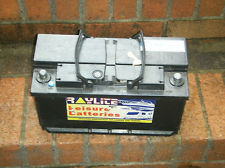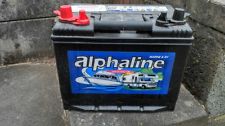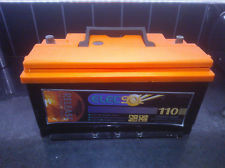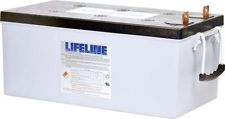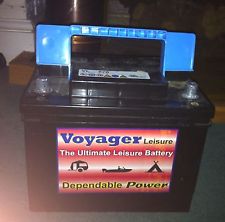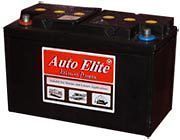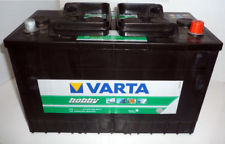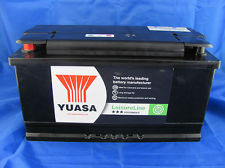Caravan Leisure Batteries
Tell Us What Your Looking For Or Search Here
|
Contact Us Below Home
|
|
Caravan Leisure Battery
Used Caravan Spares
Leisure Batteries Or Would You Like To Search For The Caravan Leisure Battery You Need By Area Or If You Would Rather Search By Manufacturer
Leisure Batteries Or Would You Like To Search For The Caravan Leisure Battery You Need By Area Or If You Would Rather Search By Manufacturer
Leisure Battery For Sale Near Me
Hi I am looking for leisure battery for sale near me, I have a tabbert vivaldi 560 td 2006 I need back window side badroom window an the window buy the door an if so I need in side handle front door if you have the parts can you give me a call asap 07766xxxxxx asap please.
Lithium Leisure Battery
I have a 1988 Lunar Clubman for scrap/collection will require trailering located, Whitchurch Shropshire. Another caravan is in storage at Seaton park caravans, with easy access, it a abi tourer about 25 years old, near to dispose as it had some damp.
I have a baliey senator series 5 Indiana and I am looking for a lithium leisure battery and the perspex main roof light dome as it has cracked. Wondered if you would have one and if so how much? If you need more info then let me know. Regards.
I have a baliey senator series 5 Indiana and I am looking for a lithium leisure battery and the perspex main roof light dome as it has cracked. Wondered if you would have one and if so how much? If you need more info then let me know. Regards.
12v Leisure Battery
Hi I have damaged my leisure batteries and the near side caravan awning rail at the rear of my Geist Lv 485 2004 model.
The 12v leisure battery and the rail that has been crushed and can't accept the caravan awning can be sent by courier please.
The 12v leisure battery and the rail that has been crushed and can't accept the caravan awning can be sent by courier please.
Motorhome Leisure Battery
I need a motorhome leisure battery and about 2m of rail, rubber caravan seal etc, and it has to have the necessary bend to accommodate the shape of the van. Thanks in advance. I can send photos if required.
Abbey Vogue GTS 215, 1998 model, windows. 1. Centre front window, Width: 970 mm, Height at centre: 910 mm, Height at sides 865 mm. Aperture 900 x 800. 2. Front left (as viewed from the front,) Width 450 mm, Height 855 mm tapering to 760 mm. Aperture 380 wide, 750 tapering to 690 mm.
Abbey Vogue GTS 215, 1998 model, windows. 1. Centre front window, Width: 970 mm, Height at centre: 910 mm, Height at sides 865 mm. Aperture 900 x 800. 2. Front left (as viewed from the front,) Width 450 mm, Height 855 mm tapering to 760 mm. Aperture 380 wide, 750 tapering to 690 mm.
110ah Leisure Battery
HI, looking for 110ah leisure battery and a front window for a Sprite Musketeer 1989-90. Size is approx 150cm wide and 70cm high. These are approx measurements as previous window ripped from caravan and smashed by the wind! The window hole is 148cm by 64cm. Many thanks.
High top motorhome on Briggs West Midlands we have a 3 way fridge freezer we believe it to be have an alarm and the caravan is based between Hartlepool and Hordon it has a fitted food caravan fridge, and hob oven grill, caravan water heater, caravan cassette toilet on the brand new caravan Leisure battery.
High top motorhome on Briggs West Midlands we have a 3 way fridge freezer we believe it to be have an alarm and the caravan is based between Hartlepool and Hordon it has a fitted food caravan fridge, and hob oven grill, caravan water heater, caravan cassette toilet on the brand new caravan Leisure battery.
Leisure Batteries For Sale
We haven't used refrigerator or caravan gas boiler for quite some time so we can't be sure if they are working, they would need to be checked out by a gas engineer if you have these people in your own caravan scrap yards then you can do it yourselves.
Inflate the caravan tyres that are not inflated and it will move if you want to come and collect it with your scrap a caravan service and take it away to one of your scrap yards near me also have you any leisure batteries for sale? Thank you.
Inflate the caravan tyres that are not inflated and it will move if you want to come and collect it with your scrap a caravan service and take it away to one of your scrap yards near me also have you any leisure batteries for sale? Thank you.
Campervan Leisure Battery
Hi we have a 1980s Carlight caravan its just stood on the drive been intending to give it a good sorting out and refit but that was a long time ago and the chassis and brakes is not looking too clever anymore the tyres look very tired.
One of the caravan spare wheels rims has gone through the sidewall of a tyre because it is going flat this means the Carlight caravan is not movable anymore so we just need you to come with your collection service and take it away, I'm also looking for a campervan leisure battery if you have any please let me know thank you.
One of the caravan spare wheels rims has gone through the sidewall of a tyre because it is going flat this means the Carlight caravan is not movable anymore so we just need you to come with your collection service and take it away, I'm also looking for a campervan leisure battery if you have any please let me know thank you.
130ah Leisure Battery
It's a Castleton caravan in a farmer's field and understandably the farmer wants it moved we stopped paying him because he started to charge far too much so we just want it to go now can you help with any of these things?
Everything in the caravan is in very good condition including the nearly new 130ah leisure battery so you would be able to sell them as caravan electrical spares and get good prices it's in the West Midlands Caravan Breakers area it has 2 caravan leisure batteries and camping power lead and caravan cooler box thank you.
Everything in the caravan is in very good condition including the nearly new 130ah leisure battery so you would be able to sell them as caravan electrical spares and get good prices it's in the West Midlands Caravan Breakers area it has 2 caravan leisure batteries and camping power lead and caravan cooler box thank you.
Best Leisure Battery
Caravan Motorhome Campervan Boat Best Leisure Battery Will Appear Here As They Come Available
Caravan Leisure Batteries Page Or Would You Like To Search For The Spares You Need By Area Or If You Would Rather Search By Manufacturer
Caravan Leisure Batteries Page Or Would You Like To Search For The Spares You Need By Area Or If You Would Rather Search By Manufacturer
Halfords Leisure Battery
I am looking for a halfords leisure battery and air inlet intake pipe hose box and a batterry support tray for a peugot 208 1.2 2015 model REG CA15. Also a window for a Swift caravan 2005 model 910H x 510W. Hope you can help.
Hi, I'm looking for some interior replacements for a Citreon C5 2003 VTR. I have an image with the parts required that I can send over to you if you could let me know where to send the image and a rough cost of items and delivery would be much appreciated. Best regards.
Hi, I'm looking for some interior replacements for a Citreon C5 2003 VTR. I have an image with the parts required that I can send over to you if you could let me know where to send the image and a rough cost of items and delivery would be much appreciated. Best regards.
AGM Leisure Battery
I am requiring a new agm leisure battery and window for my motorhome/campervan.
Details are:
Pos: rear left. Window: Birkholz BR/R----/0512. Approx size of window: 962x525mm. Approx size of opening: 890x450mm. Motorhome: Eriba-Car 530, Renault Trafic T1300 1989 reg. If you can help me it would be greatly appreciated. Many thanks.
Details are:
Pos: rear left. Window: Birkholz BR/R----/0512. Approx size of window: 962x525mm. Approx size of opening: 890x450mm. Motorhome: Eriba-Car 530, Renault Trafic T1300 1989 reg. If you can help me it would be greatly appreciated. Many thanks.
Camper Roof Window
Or Would You Like To Search For The Camper Roof Window You Need By Area Or If You Would Rather Search By Manufacturer
Numax 110 Amp Leisure Battery
Back To Top of Leisure Batteries Page
Home
Used Caravan Spares
Or Would You Like To Search For The Numax 110 Amp Leisure Battery You Need By Area Or If You Would Rather Search By Manufacturer
Home
Used Caravan Spares
Or Would You Like To Search For The Numax 110 Amp Leisure Battery You Need By Area Or If You Would Rather Search By Manufacturer
| Caravan Solar Panels | Caravan Electrical Supplies | Caravan Appliance Spares | Caravan Lights and Sockets | Caravan Exterior Lights | Leisure Batteries | Caravan Aerial | Caravan Electrical Spares | Caravan Zig Units | Caravan Charger | Electrical Hook Up | Camping Power Lead | Eberspacher Caravan Heater |
|
|
|

